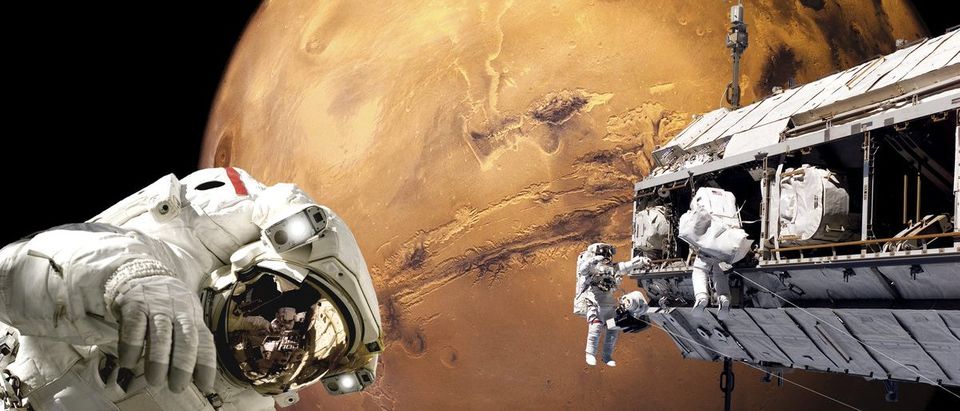Students and staff at the Rhode Island School of Design are building a new space suit for NASA’s mission to Mars.
The new suit is expected to be tested during a Mars simulation mission next year in Hawaii. Real space suits are designed to work in a zero gravity vacuum environment, meaning they’re too expensive and too heavy to use at the simulation mission.
A similar six-month long Mars simulator is just over 36 feet wide and 20 feet tall. The simulators are intended to see if a crew of three men and three women could live in close quarters over an extended period of time.
NASA has spent $1.2 million on a dome study run through the University of Hawaii. The simulation was the second-longest of its kind, next to a mission that lasted 520 days in Russia. NASA plans to conduct three similar experiments in the near future. The space agency estimates that an actually manned Mars mission would take between one and three years to carry out.
NASA wants to put a large space station in orbit above Mars by 2028, according to plans outlined by Lockheed Martin. Astronauts will live aboard this “Mars Base Camp” for about a year to collect information in preparation for the first manned landing.
Lockheed Martin’s plan will construct a 132-ton space station around Mars capable of hosting six astronauts for a year. In comparison, the International Space Station weighs about 440 tons. The astronauts would remotely operate rovers, analyze samples of dirt and rock and even make short trips to Mars’s two moons.
Such a mission would be relatively affordable. The station could be repeatedly reused, according to Lockheed Martin, but the company did not include any cost estimates for the program.
NASA’s rocket, which is intended to take American astronauts to Mars in 2030, passed its final full-scale tests in late June. They were the rocket’s last test before its first crewless flight into space in 2018. Astronauts won’t ride the rocket into orbit until at least 2021.
NASA’s plans to carry astronauts to Mars have been repeatedly sabotaged by President Barack Obama’s administration, which was accused of leaking information to the press about missions, and has threatened to veto the projects. The space agency’s budget includes more than $2 billion for its Earth Science Mission Directorate for global warming science, which is specifically allocated to improve climate modeling, weather prediction and natural hazard mitigation. In comparison, NASA’s other functions, such as astrophysics and space technology, are only getting $781.5 and $826.7 million, respectively.
NASA currently plans to send real astronauts to Mars in 2030. The total costs of current plans to send Americans to Mars comes out to roughly $35 billion spent by 2025 to arrive in 2030. America is currently better prepared to visit Mars than it was to visit the Moon in the 1960s, according to a study by NASA’s Johnson Space Center.
The rocket intended to take American astronauts to Mars in 2030 passed its final full-scale tests in late June.
Send tips to andrew@
All content created by the Daily Caller News Foundation, an independent and nonpartisan newswire service, is available without charge to any legitimate news publisher that can provide a large audience. All republished articles must include our logo, our reporter’s byline and their DCNF affiliation. For any questions about our guidelines or partnering with us, please contact licensing@dailycallernewsfoundation.org.


